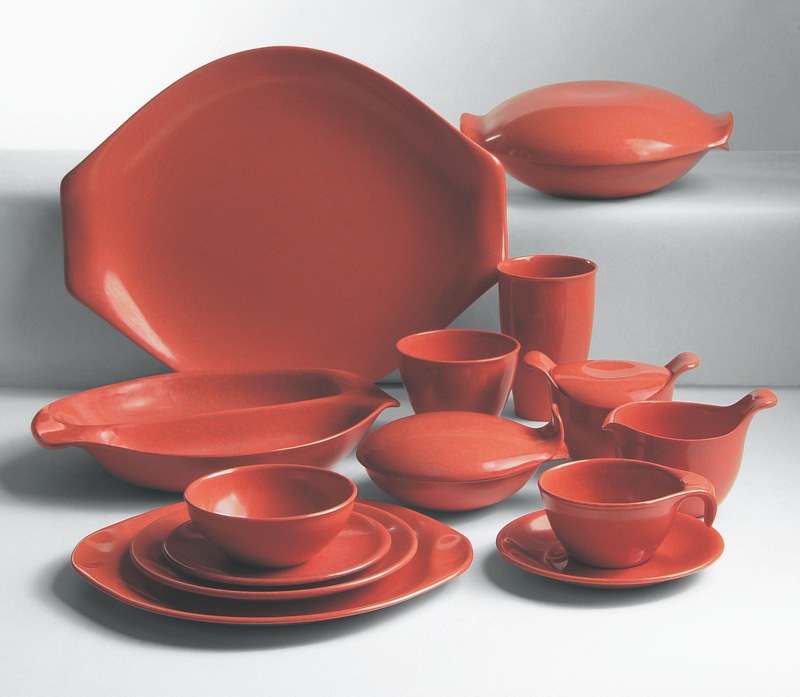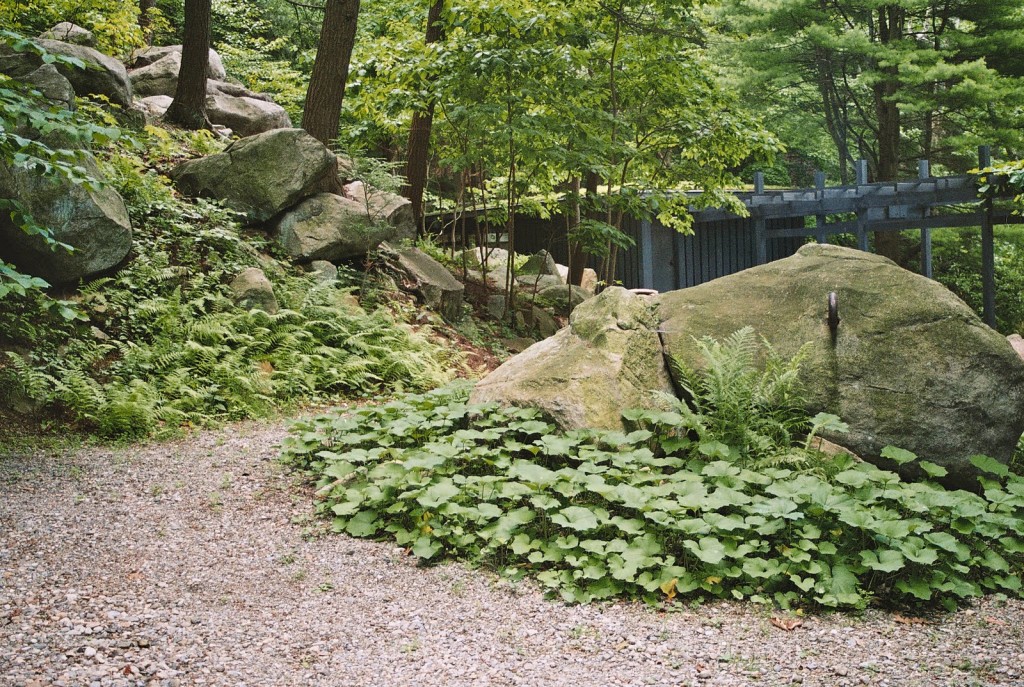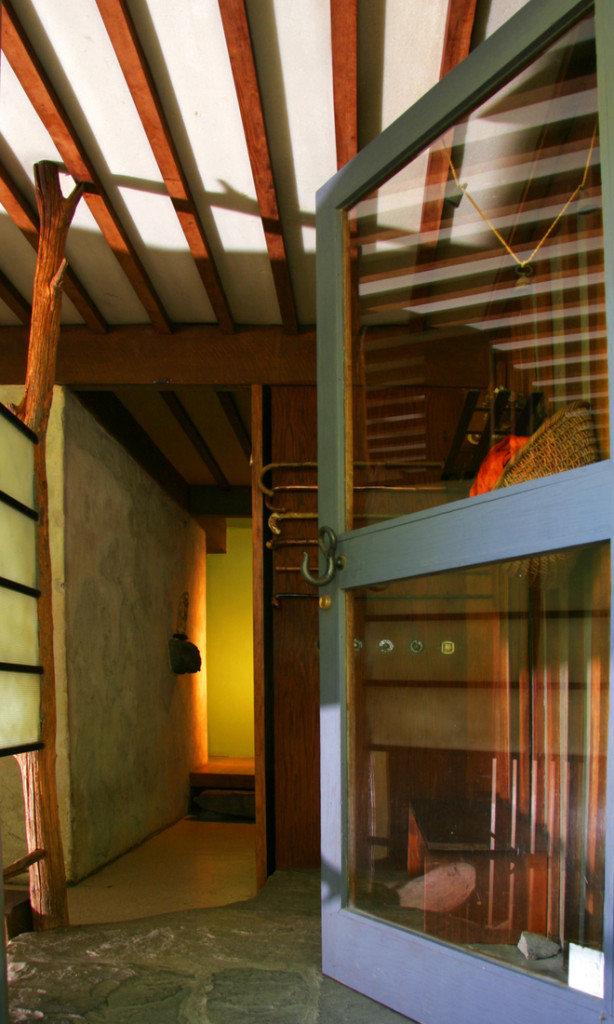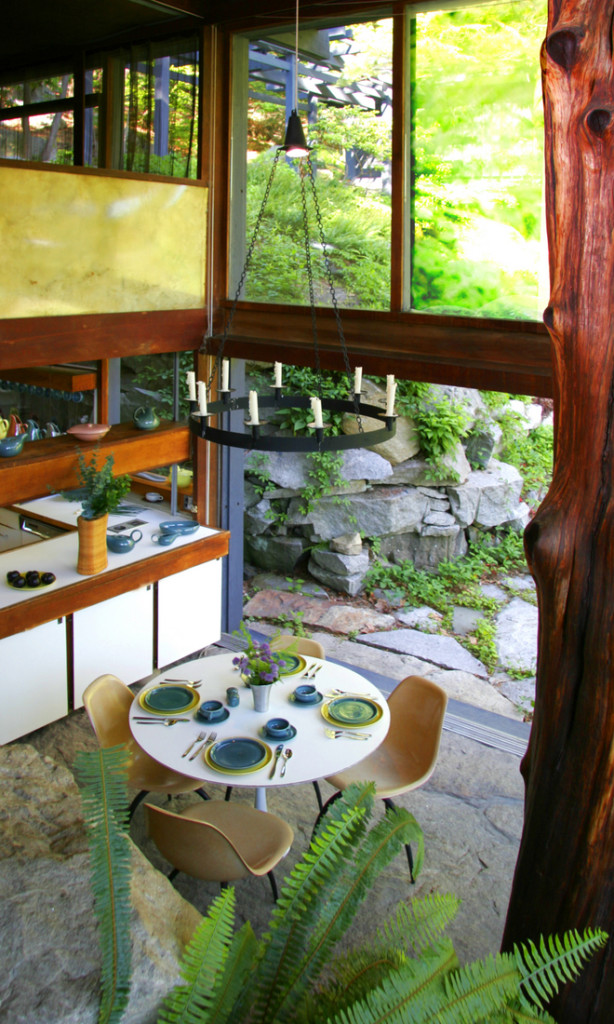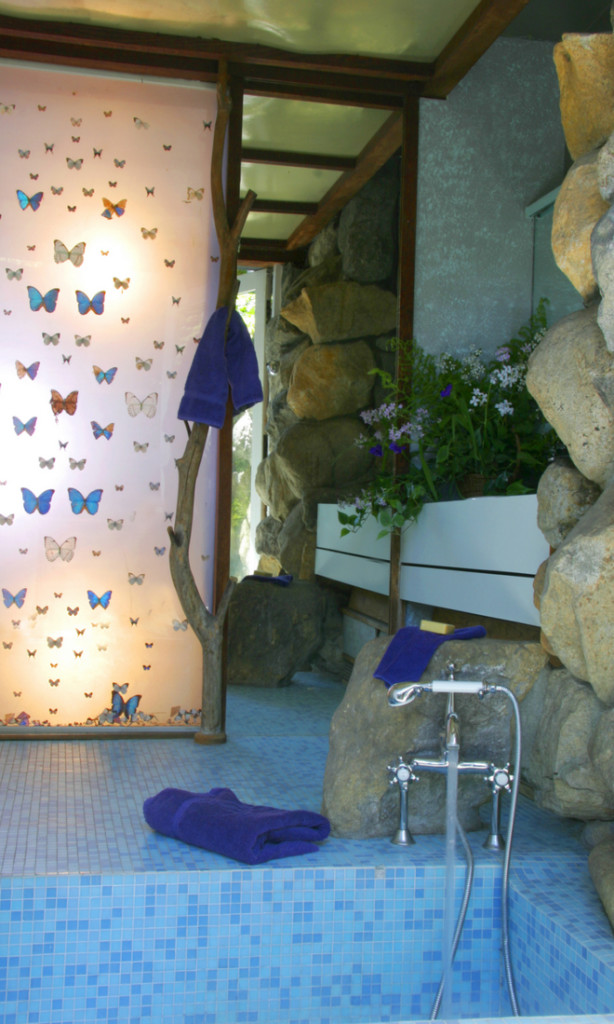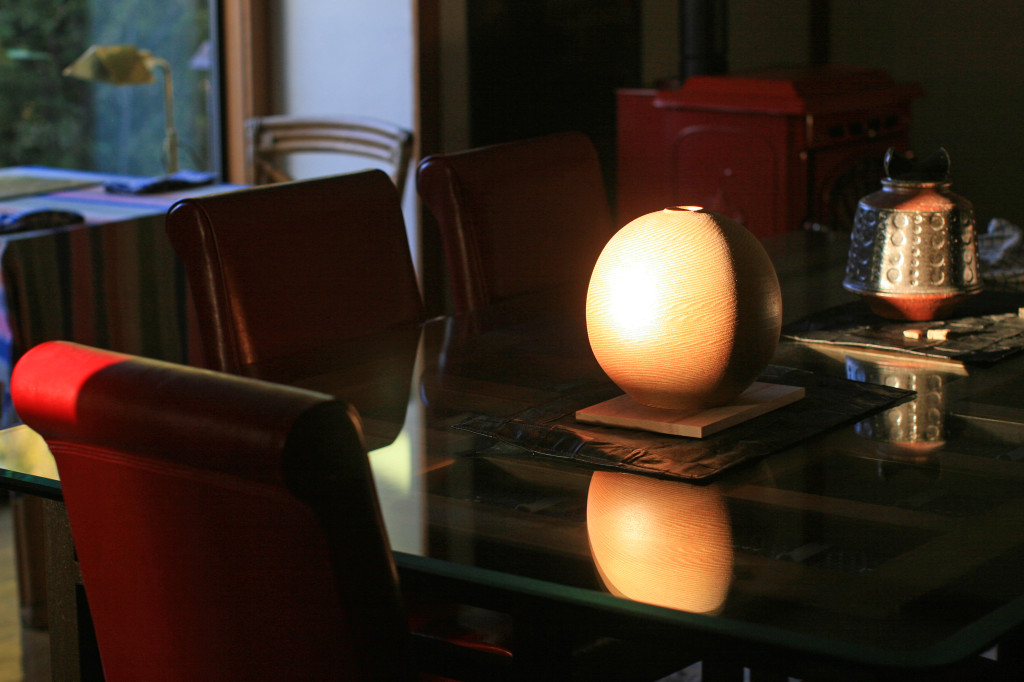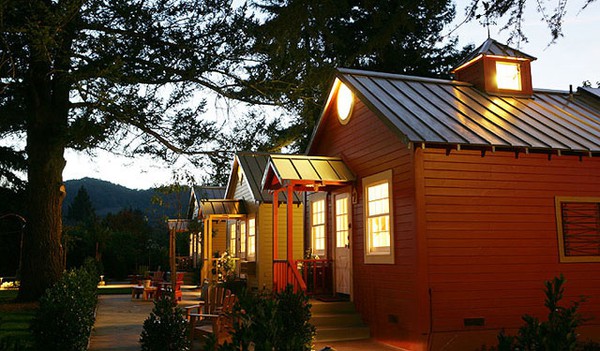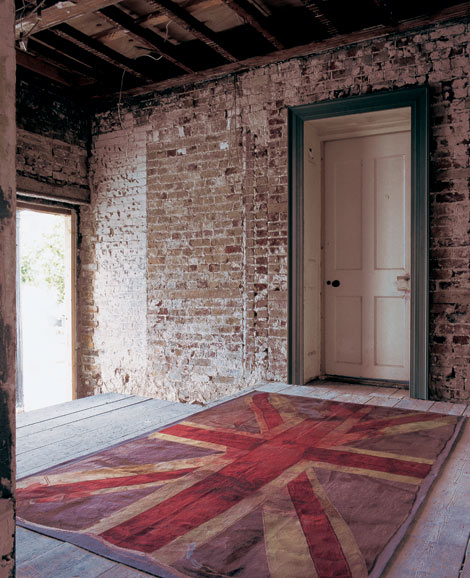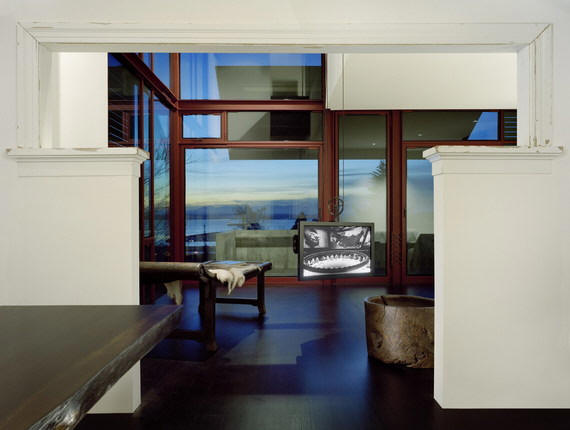In the Mid-20th-Century, the name Russel Wright commanded brand awareness similar to that enjoyed today by lifestyle marketers such as Ralph Lauren and Martha Stewart. Known primarily as a pioneer in industrial designs, today Russel Wright is best known today for his housewares.
Russel Wright also revolutionized the American home. His modern wares influenced and often established middle class taste post WWII. His inexpensive and mass produced dinnerware, furniture, appliances, and textiles, all available to peruse at Russel Wright Studios, LLC , were not only innovative, but also the tools for the concept he and his wife, Mary, called “easier living”.
Easier Living was a unique American lifestyle that was gracious yet contemporary and informal and was meant as a statement against the mores of the time set by such icons as Emily Post. In 1950 Wright co-authored with Mary (also his marketing expert), the book called “Guide to Easier Living” , a precursor to Slow Home.
At the top of his career, Wright left New York City and moved his base of operations to Garrison, NY. It was there that he conceived of, and, created his unique home and designed landscape calling it Manitoga, Place of the Great Spirit in Algonquin. He considered his home and the land his greatest work of art, and greatest contribution to the world. It was a tribute to his wife and to their shared dream of the way of life they called easier living. Like slow home, it stood for a return to basics and simplicity, a way of life that was in tune with the environment.
When Wright first found this property in 1942 it was ravaged and damaged by a century of quarrying and lumbering. Over the next three decades, until his death in 1976, he carefully and lovingly reclaimed, redesigned and re-sculpted Manitoga’s 75 acres using native plants. He then began on his home where his original training as a theater designer and sculptor became apparent. Known as Dragon Rock, the home is built on Manitoga’s hilly woodland, adjacent to the abandoned quarry. He conceived it as an experiment for total living, and it was one of his few efforts that was intended to be purely unique. Wright owned the property for more than a dozen years before starting construction of his residence and studio, giving him the opportunity to thoroughly explore and understand the layout and natural advantages of the terrain. It therefore is one of the few homes where one can live and work in harmony with nature as the structure seems to be “set” into the landscape naturally. Wright believed that there is a design element in everything, from the natural environment to the way we live. This philosophy is apparent in every detail of the house, from the original design to the way the things are set up inside and out.
Below is the extraordinary video that inspired this post which I saw on Facebook from Anthropologie. They recently visited Manitoga (now owned by the Natural Conservatory) for a photo shoot for their fabulous catalog, and just knew that they had to share this spectacular place. To tell its story, they spoke with Lori Moss from the Russel Wright Design Center. Enjoy!
“Good informal living substitutes a little headwork for a lot of legwork. It doesn’t need wealth, but it does take thought, some ingenuity and resourcefulness, and more than a little loving care to create a home that is really your own.”Russel and Mary Wright
What do you think of Russel Wright’s legacy, Manitoga? Could you live there? Does it inspire you towards simplicity and sustainability? I invite you to leave a comment, I’d love to know your thoughts!
Comments
14 Comments
-
lovely story! can be sure to hotlink the photo credits? thank you.
-
Author
and yours too Pam…how do you hotlink a photo? you can email me too…home@irene-turner.com
-
-
Thanks for the kaleidoscopic on Wright. What a wonderful marriage of the primal and the modern.
Glad to have met your work..still reflecting on the “contemplative places.”
You may want to look up Oscar Niemeyer, Brasilia–especially Dom Bosco’s Cathedral. This is another wonderful take on how to define humanity by the things we create to work, worship, play, and sleep in.
mark
-
Author
Thanks Mark for stopping by again! and particularly thanks for the turn on to Oscar Niemeyer. I will certainly be exploring his work! Have a great week end
-
-
Irene, Loved reading this… Thank you! Yes I agree with you, I feel the time for a slow home approach is now, was then and will continue to be…. We all are looking for a connection and ready for slowing down. Slow home is about creating a mindful awareness about all the little things we do locally, spiritually and globally and how they really impact our lives and the lives of those around us. Like the slow food movement, it’s making a connection with your food source, asking question about how it’s grown and making the time to cook it for enjoyment with your local community. Nothing brings more pleasure than being a part of something Real Honest, Good for you and Beneficial for our World.
-
Author
Hi Gloria, thanks for stopping by. LOVE your comments and a big believer in everything you say. Would love to have a further conversation with you about this. How can I get in touch with you?
-
-
Nice commentary. What a great house.
I think in our own way we are heading there from an interior perspective. People want that spa or zen like atmosphere. We have limited our use of pattern in favor of more monochromatic schemes. People like this idea of slow home even if they don’t ask for it by name.
Everything old is new again… now if we could get rid of the “gotta-have-it” electronic gadgetry phase.
-
Author
I actually think slow home is the balance to the “gotta-have-it” electronic gadgetry. That is not going away or slowing down so we need our homes to help us with the balance. Actually writing a book on the subject. Glad you like! and thanks for stopping by!
-
Russel Wright sure knew how to live the simple life in style. Love that horse!
His lifestyle reminds me of my uncle who was an artist, and who just like my dad built his own house from scratch. One of my favorite things was the floor in the guest house, which was made from recycled railroad bricks. He in his wife knew how to live the slow life in a well-designed environment. Since they passed away my cousin is carrying on the tradition and gets to enjoy the wonderful house, guest house and studio his father built.
Cheers,
Claudia
-
Author
what is your uncle’s name Claudia?
-
Trackbacks
-
Websites worth visiting…
[…]here are some links to sites that we link to because we think they are worth visiting[…]……
-
Cool sites…
[…]we came across a cool site that you might enjoy. Take a look if you want[…]……
-
Sites we Like……
[…] Every once in a while we choose blogs that we read. Listed below are the latest sites that we choose […]……
-
Recent Blogroll Additions……
[…]usually posts some very interesting stuff like this. If you’re new to this site[…]……



